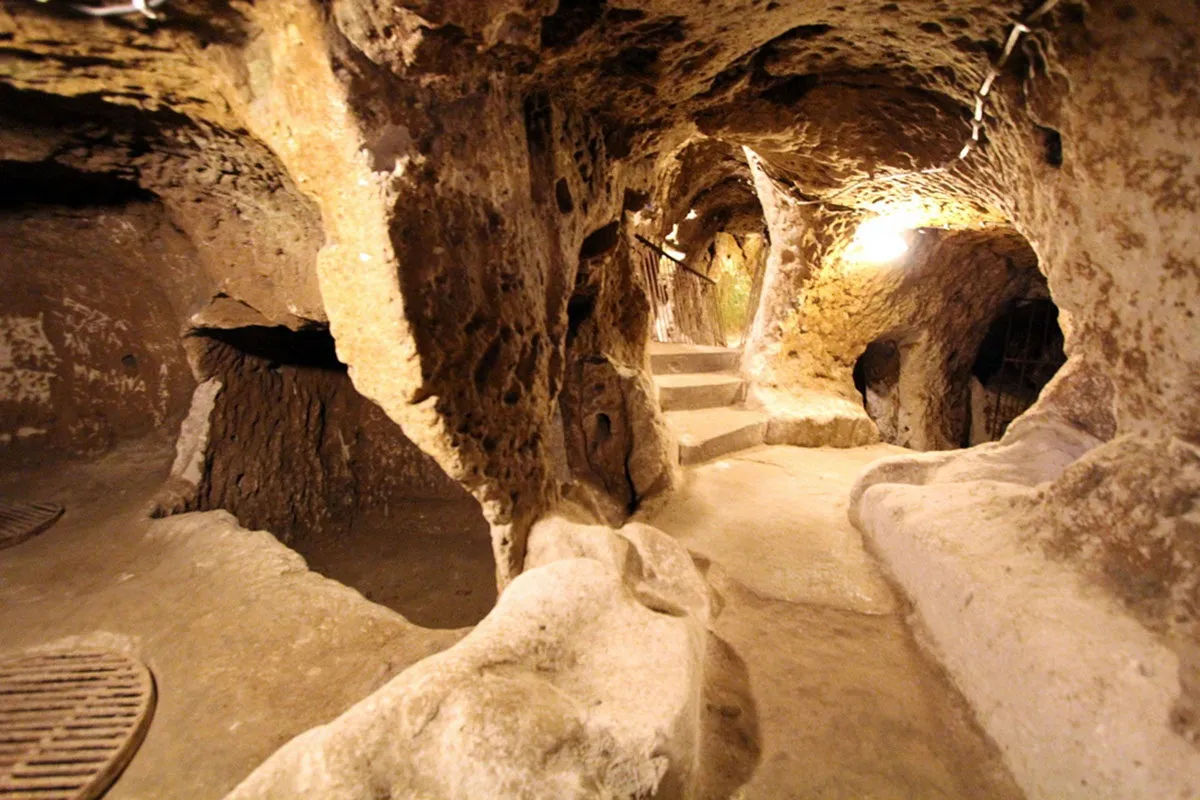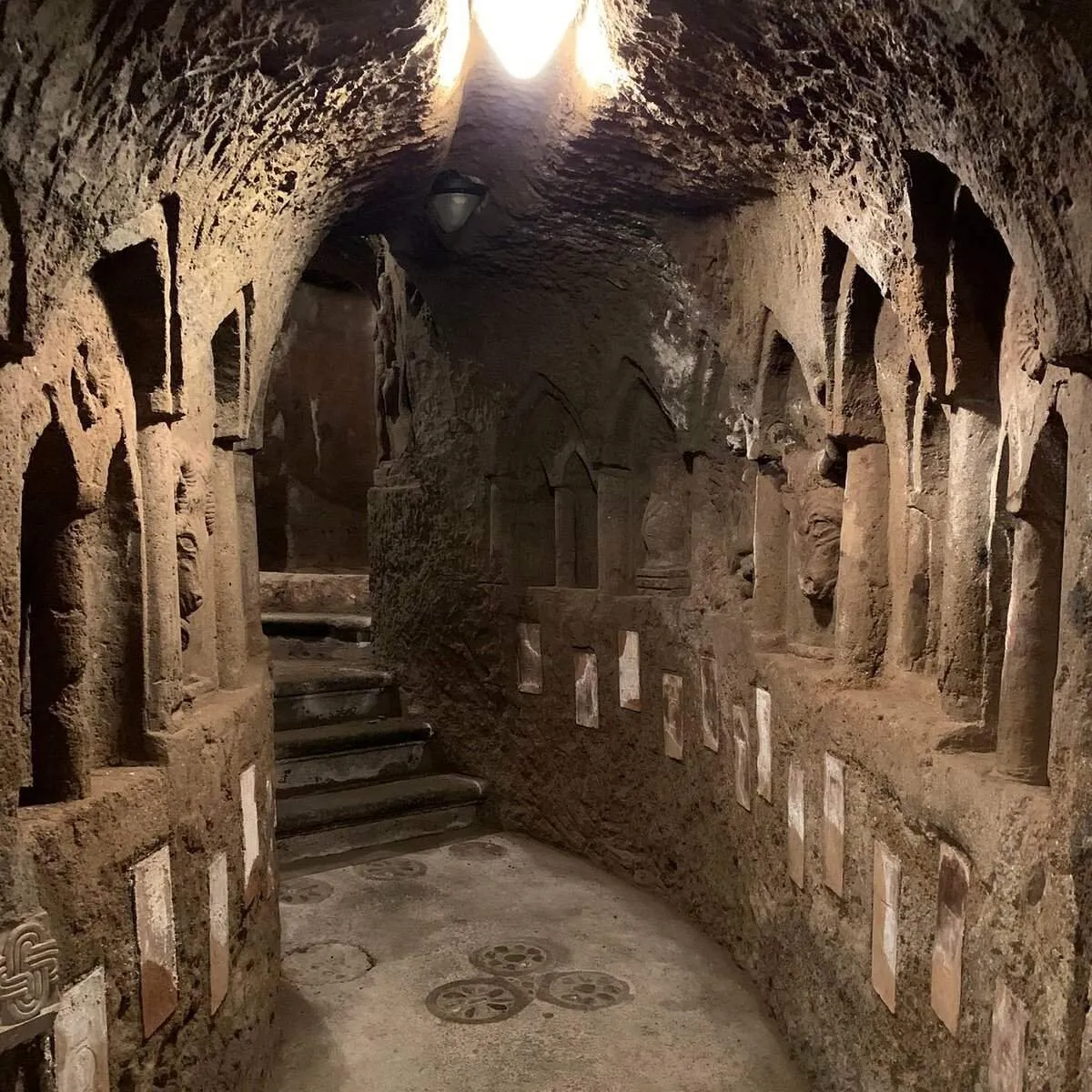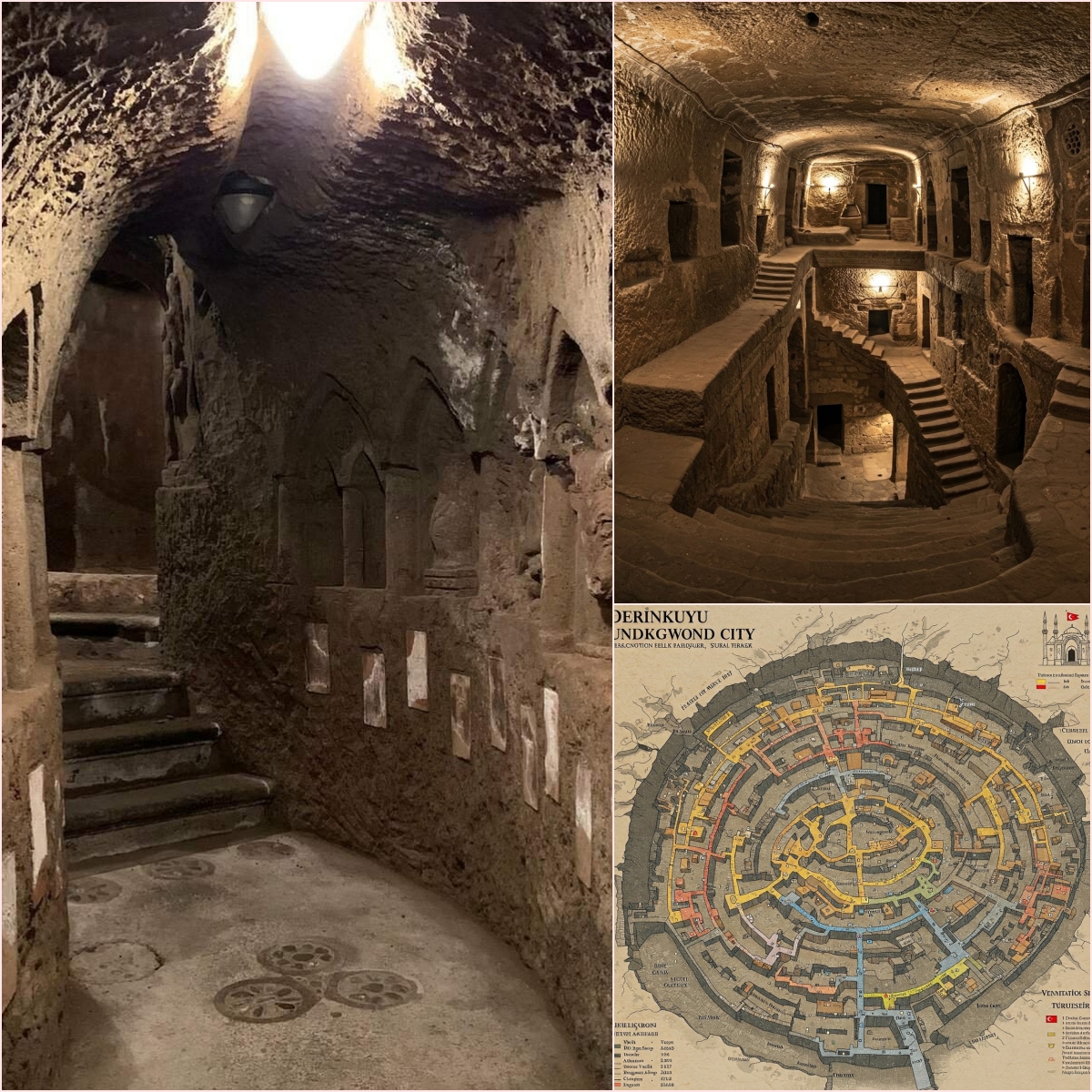The Mystery of Ancient Underground Cities: The Truth Behind Zoroaster’s Legend?
In the ancient texts of Zoroaster, there is a story of a catastrophe that devastated the Earth: a brief but intense ice age, known as “The Days of Malkush.” According to the legend, this event lasted for about three years, bringing deadly cold winds that wiped out life on the Earth’s surface. Before the disaster struck, Ahura Mazda—the supreme deity in Zoroastrianism—warned humanity and provided a means of survival: building underground cities to escape the destruction of nature.

Is this story merely a myth, or does it reflect a forgotten historical reality? Could “The Days of Malkush” be a faded memory of a real ice age that once struck the Earth?
The image you see is Derinkuyu, a mysterious underground city located in the Cappadocia region of Turkey. According to archaeologists, the center of this city existed at least 2,800 years ago, around the 8th century BCE. However, the natural cave systems in this region may have existed long before that, expanded and utilized by ancient civilizations.
Derinkuyu is not just a simple cave but a highly complex urban structure with 18 underground levels, plunging 85 meters deep. The city could house up to 20,000 people, along with their livestock and food supplies. It contained essential facilities: wells, chapels, schools, stables, and even areas for wine and olive oil production. Moreover, massive stone doors were designed to seal off the city, protecting its inhabitants from external threats.

The existence of Derinkuyu remained unknown until 1963 when a man, during renovations in his home, accidentally uncovered a passage leading to this subterranean world. Since then, Derinkuyu has become one of the most fascinating archaeological discoveries, raising countless questions about the technical capabilities of ancient humans.
What’s even more astonishing is that Derinkuyu is not an isolated case. Thanks to modern technology, we are uncovering a global network of underground cities and tunnels:
Egypt: Beneath the Giza Plateau, researchers have discovered a vast system of tunnels, caves, and underground rivers. According to archaeologist Dr. Selim Hassan, many passages extend for kilometers, suggesting that the ancient Egyptians (or perhaps an earlier civilization) possessed advanced excavation techniques.
Guatemala: Under the Mayan pyramid complex of Tikal, scientists have mapped over 800 kilometers of tunnels, many of which remain unexplored.

China: In 1992, 24 artificial caves were discovered in Zhejiang province, featuring astonishingly precise cuts. It is estimated that 36,000 cubic meters of stone were removed to construct them.
Europe: Thousands of Stone Age tunnels, known as “Erdstall,” stretch across the continent, leaving archaeologists puzzled about their original purpose.
Modern science has revealed that approximately 12,000 years ago, the Earth experienced a sudden and severe cooling event, known as the Younger Dryas Ice Age. This period, lasting around 1,300 years, led to dramatic temperature drops and disruptions in global ecosystems. This raises an intriguing hypothesis: could “The Days of Malkush” described by Zoroaster be a distorted memory of this cataclysm?
If so, were underground cities like Derinkuyu built as refuges from the harsh climate? Or were they intended for another purpose?

A larger question emerges: Why did our ancestors go to such great lengths to construct these underground cities? If they were merely seeking shelter from the cold, small natural caves could have sufficed. However, Derinkuyu and similar sites were not temporary shelters; they were complete urban systems. This suggests alternative possibilities:
Were they hiding from an enemy, perhaps hostile tribes or a mysterious force?
Were they seeking protection from meteor impacts, volcanic eruptions, or other natural disasters?
Or is it possible that an advanced civilization once existed, forced to live underground for survival?
Even with 21st-century technology, constructing an underground city like Derinkuyu would take decades, requiring immense resources and expertise. How, then, could humans from the Iron Age—or even earlier—achieve such a feat?
Recent archaeological discoveries are revealing an astonishing reality: the history of humanity may not be as straightforward as we once believed. It is possible that advanced civilizations existed long before recorded history but vanished due to unknown events.
Derinkuyu, along with underground tunnel systems worldwide, may be remnants of a past we have yet to fully understand.
Are we ready to confront this truth? Or will we continue to dismiss these findings as mere legends?






